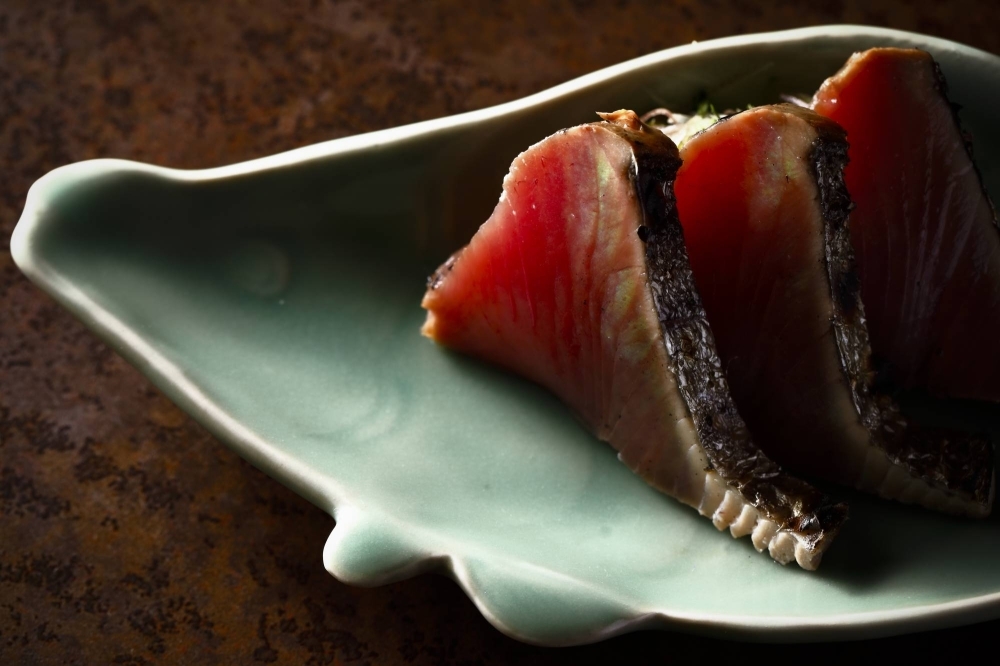The fourth course came nestled in a narrow, emerald fish-shaped dish: three pieces of bonito tataki (flash-grilled) so fresh, they might have just come swimming on the early summer breeze.
At Kyoto’s Muromachi Wakuden, a kappō-style restaurant bearing one Michelin star, the three tataki slices leaned staggered on a small mound of shaved onions, accompanied only by ponzu. Freshly back from a year of studying cuisine in France, I was struck by the subtlety of this course — visually simpler than the dishes I had encountered that past year, yet exuding an unparalleled confidence, the elegant fattiness of the bonito creating a velvet cloak on the tongue.
After the meal, I exited onto the streets of Kyoto with a peculiar feeling. Every one of the nine courses at Muromachi Wakuden was understated but carved a demanding presence. Similarly refined dining experiences in France had excited me with the limitless culinary creativity of chefs, but this was different. Over those two hours, I had glimpsed something — the dishes I had just communed with seemed rooted in a long-standing, crystallized philosophy, one that is perhaps uniquely Japanese.



